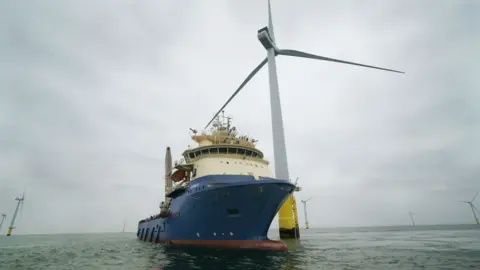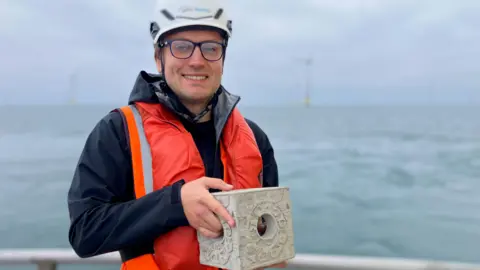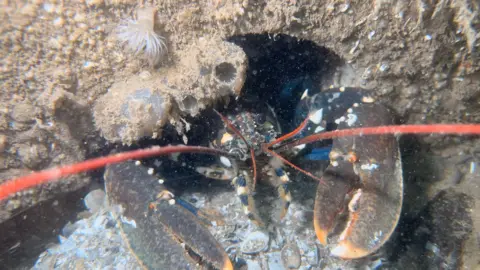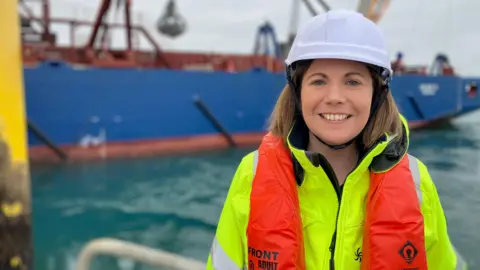Artificial reef created at Rampion offshore wind farm in Sussex

Fiona IrvingSouth East environment correspondent
 BBC
BBCOne of the largest artificial reefs in the world has been installed at a wind farm off the Sussex coast.
The project at the Rampion Offshore Wind Farm is the first of its kind, with 75,000 specially designed “reef cubes” placed at the bottom of a single turbine.
It is part of a nature-inclusive design project, with the cubes helping to protect the turbine from erosion while also serving as a home for a wide range of marine life.
Helen Elphick, an innovations partner at RWE, the company that operates Rampion, said it was exciting to be involved in a trial which was a “sustainable win-win”.

The reef cubes have been designed with a chamber in the middle and a honeycomb texture on the outside to encourage marine life to use them.
Samuel Hickling, the chief scientific officer at ARC Marine, said the intention was to “replicate the complexity that you get in a natural reef, so you can get reef building species settling on it”.
It is hoped species such as ross worms, anemones, oysters and mussels will live on the reef cubes and that fish and crustaceans will also come over time.
More than 100 of the cubes have already been used at a scallop farm in Torbay.
However, the sheer scale of the 75,000 cubes installed at Rampion, over an 820 sq m (8,826sq ft) site, means this trial is far bigger.
 ARC Marine
ARC MarineSea currents speed up as they pass around the base of a wind turbine and can cause erosion, so scour pads – made up of rocks – are often installed around the foot of offshore turbines.
This pilot project is looking at ways to replace the rocks with a nature-friendly artificial reef.
“We need to put scour protection down around our turbines and this kind of a solution both achieves that but it also provides extra habitats for marine species,” said Ms Elphick.
“It’s a real sustainable win-win.”

The low carbon reef cubes are made near Truro from recycled waste aggregate from Cornish clay mines.
A crane placed the cubes into a hopper which then saw them fed through a pipe 25m (82ft) down to the sea floor, a process which took two days.
The project, which took eight years to get off the ground, will be studied for five years to see how effective it is at protecting the turbine from erosion and how bio-diverse it becomes.




